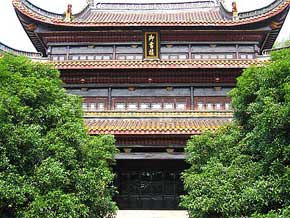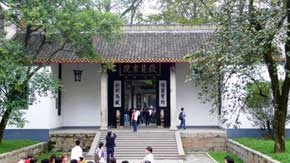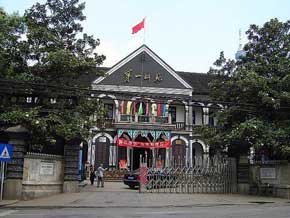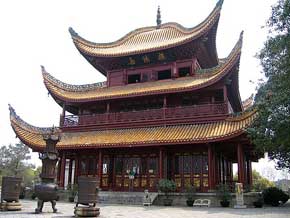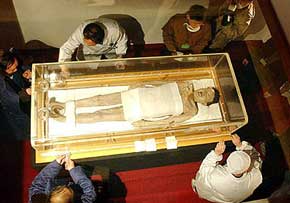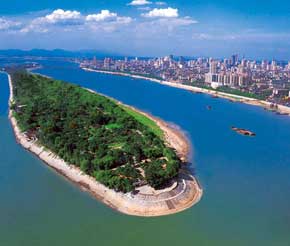|
Changsha is the capital of Hunan Province. The history of the city dates back to the Western Zhou Dynasty (1046-771 BC) and Han Dynasty (206 BC-AD 220). It is also the centre of Huxiang Culture. Encompassing 11,819 square kilometers, the city is composed of five districts and four counties with a population of 5.82 million. The area and population of the city proper are 554 square kilometers and 1.51 million respectively. The city lies in the rich Xiangjiang Plain. The yearly average temperature is 17.2℃. At the end of 1998, Changsha was named China's "excellent tourist city." The mainstay industries of Changsha are food, electronics, machinery, chemicals, building materials, textiles, pharmaceuticals and metallurgy. Traditional export products including Hunan embroidery, fireworks, pottery, porcelain and granite enjoy a good reputation in the international market. Four big high-tech industries including electronics, electronic and mechanical technology, new materials and biological technology have been established in Changsha. In the city itself, Changsha has unique natural scenery and many places of interest. There are natural scenic spots including the Yuelu Mountain, the Xiangjiang River that runs across the city from south to north, the Shuilushou Island in the centre of the river, and the Liuyanghe River, which meanders to the Xiangjiang River in the northern part of Changsha. In the suburbs, there are tourist spots such as the Hongshan Holiday Resort, the Huitang Hot Spring, Mount Dawei National Forest Park, Mount Heimi, Moon Island, the Shiyan Lake Resort and Mount Daowu. Mount Yuelu is said to be the north point of Mount Hengshan, one of the five sacred mountains in China. Hangshan, stretching for 400 kilometers is in the Central China's Hunan Province and ranks among the five most famous mountains in China. Mount Hengshan has long been known as the mountain of longevity. Stone inscriptions left by emperors and scholars from different dynasties dot many legendary scenic spots, eulogizing the harmony of nature and man. Local villagers retain their own lifestyle in the midst of the chaos of modernity. Buddhist temples and Taoist palaces sit side by side. A grand praying ceremony for peace and stability was held on October 10, 2000. A very famous scene at the mountain is the maple leafs in autumn, described by Du Mu (803-c.852), a famous Tang-dynasty (618-901) literati (man of letters), as "redder than the flowers in early spring." The mountain is also renowned for its historical and cultural significance. It is a place where religions like Confucianism, Taoism and Buddhism co-exist peacefully. There are tombs of Huang Xing JkA (1874-1916) and Cai E (1882-1916), forerunners for Chinese democracy. It is also a place where Chairman Mao Zedong (1893-1976) and his comrades got together in the early parts of the political careers. The Mount Dawei National Forest Park is located in the eastern suburb of Changsha. The rich resource of oxygen there has earned the park the name of "the natural air conditioner." The park has hundreds of scenic spots, featuring mountaintop lakes, waterfalls, and streams and rich biological resources. Among the 2,004 kinds of plants, 10 species are on China's priority list for protection. Famous archaeological discoveries include the Four-Goat Wine Vessel of the Shang Dynasty (1600-1046 BC), the Tomb of the Han Dynasty (206 BC-AD 220) at Mawangdui and its well-preserved female from 2,100 years ago, and the historical chronicles of the Three Kingdoms period (220-280). In addition, there are many other interesting spots, including the millennium-old Yuelu Academy, the Kaifu Buddhist Temple, the Tianxin Temple, the First Normal School where Mao Zedong started his career, and the site of the Xinmin Society. Many places of cultural and historical interest , including the Mawangdui Han Dynasty (206 BC-AD 220) Tomb, the Yuelu Academy, the Lushan Buddhist Temple, the Kaifu Buddhist Temple, the Aiwan Pavilion and the Yunlu Taoist Temple, have made the city an attractive tourist destination. As one of the first batch of "China's Excellent Tourism Cities," Changsha's charms also lie in its unique geographic conditions. It has green mountains, clean waters, and beautiful islets. Dubbed the "Land of Rice and Fish (a land flowing with milk and honey)," Hunan is famous throughout the country for its agricultural produce.
|
|

